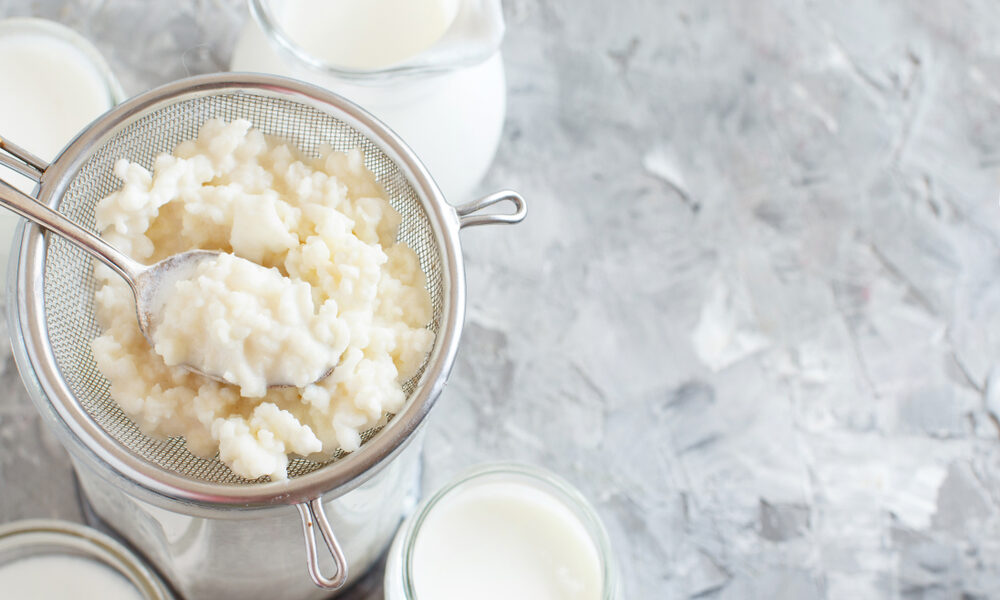Probiotic kefir

External health & skin issues can often be related to gut health. You’ll be surprised how much success you can get just by introducing probiotics into your dog’s diet.
Even if you feed yoghurt you should consider incorporating kefir as well.
Yoghurt keeps the digestive system friendly by feeding the ‘good’ bacteria. However, kefir can actually colonize the intestinal tract with these wonderful single celled organisms. It also contains around 3 times the amount of beneficial bacteria than yoghurt.
Probiotics in commercial dog food
Have you seen all the promotions about probiotics in commercial, dried dog food? What a load of codswallop!
Due to processing and cooking, most commercial kibbles contain a pitiful amount of living, beneficial bacteria by the time they reach your dog’s bowl.
It’ so much easier to make some wholesome milk kefir at home, and that way you know they’re getting the real deal!
What do probiotics actually do?
Beneficial bacteria helps dogs maintain a healthy inner ecosystem. However, often the balance of good bacteria and bad bacteria is ‘out of whack’.
When the bad bacteria outnumbers good bacteria, you run into a whole host of problems. The worst of these ‘bad’ bacteria is Candida. Candida overgrowth in dogs can present in a few ways:
- Persistent scratching or itching behaviour.
- Slow healing sores.
- Excessive chewing & licking of paws.
- Head shaking and ear infections (with yeasty wax build up)
- Extreme shedding or hair loss.
Where to get probiotic kefir
Kefir is available in the dairy section at major supermarkets, but you can also make it yourself cheaply at home. Check out our kefir recipe!